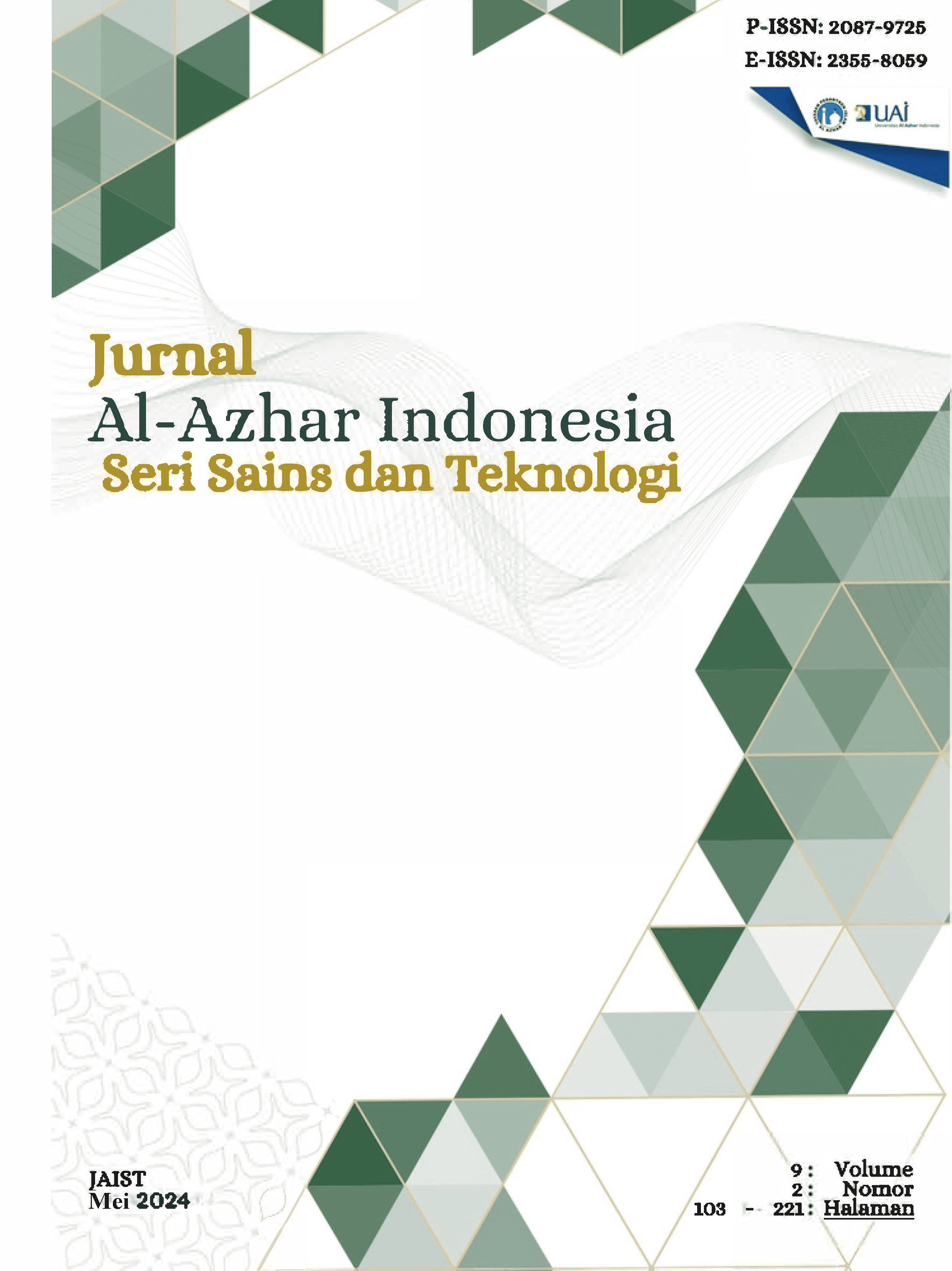Analisis Elemen Kemasan Sekunder Pembalut Dengan Metode Rough Set
DOI:
https://doi.org/10.36722/sst.v9i2.2198Abstract
A common problem often encountered in sanitary napkin packaging is inadequate product protection. Failure to open or reseal the packaging and the use of materials that cannot be reused are complaints from 97% of consumers regarding sanitary napkin products currently on the market. This research aims to analyze packaging design elements according to consumer preferences. In this research, the Kansei Engineering and Rough Set methods were used. Kansei Engineering has the advantage of being able to translate consumer emotions into design elements. The design element analysis process is carried out using the Rough Set method. The research results obtained consumer emotions in the form of 19 Kansei words and 29 packaging samples as design references. Analysis of sanitary napkin packaging design elements obtained recommendations in the form of cardboard material, folding cardboard packaging type, no additional features, box body, opening type with flap, medium size, feminine design, script typography, and image elements in the form of pictures and illustrations. This research succeeded in proving Kansei Engineering's ability to produce packaging designs according to consumer preferences through quantitative data analysis.
Keywords - Model Kano, Rough Set, Design Element, Packaging
References
M. Fitriah, Komunikasi pemasaran melalui desain visual. Deepublish, 2018.
F. Abdullah, B. T. Wardoyo, and A. Mohd. Adnan, “Batik Packaging Design for Creative Industry and Sustainability:,†in Proceedings of the 3rd International Conference on Arts and Design Education (ICADE 2020), Bandung, Indonesia: Atlantis Press, 2021. doi: 10.2991/assehr.k.210203.012.
Nanang Wahyudi and Sonny Satriyono, Mantra Kemasan Juara. Elex Media Komputindo, 2017.
R. D. Pramesti and Susilawati, “Analisis Fitur dan Elemen Desain Kemasan Bakpia Kenes Terhadap Persepsi Konsumen,†Wahana, vol. 73, no. 2, pp. 74–87, Dec. 2021, doi: 10.36456/wahana.v73i2.4731.
Rico Elhando Badri, Cahyani Pratisti, and Anandha Sartika Putri, “Pengembangan Inovasi Kemasan Produk Untuk Meningkatkan Daya Tarik Umkm Wedang Jahe di Desa Sidodadi Asri,†PaKMas J. Pengabdi. Kpd. Masy., vol. 2, no. 2, pp. 347–353, Nov. 2022, doi: 10.54259/pakmas.v2i2.1268.
T. Hanifawati, A. Suryantini, and J. H. Mulyo, “Pengaruh Atribut Kemasan Makanan Dan Karakteristik Konsumen Terhadap Pembelian,†Agriekonomika, vol. 6, no. 1, Apr. 2017, doi: 10.21107/agriekonomika.v6i1.1895.
S. Campbell et al., “Purposive sampling: complex or simple? Research case examples,†J. Res. Nurs., vol. 25, no. 8, pp. 652–661, Dec. 2020, doi: 10.1177/1744987120927206.
N. P. Sari, Perancangan dan Pengembangan kemasan. PNJ Press, 2019.
M. Nagamachi, “Kansei Engineering and Rough Sets Model,†in Rough Sets and Current Trends in Computing, S. Greco, Y. Hata, S. Hirano, M. Inuiguchi, S. Miyamoto, H. S. Nguyen, and R. Słowiński, Eds., in Lecture Notes in Computer Science, vol. 4259. Berlin, Heidelberg: Springer Berlin Heidelberg, 2006, pp. 27–37. doi: 10.1007/11908029_4.
O. I. John, “Shopping and Patronage of Online Customers,†Int. J. Bus. Manag., Oct. 2022, doi: 10.24940/theijbm/2022/v10/i10/BM2210-027.
B. Halder, S. Mitra, and M. Mitra, “Classification of Complete Myocardial Infarction Using Rule-Based Rough Set Method and Rough Set Explorer System,†IETE J. Res., vol. 68, no. 1, pp. 85–95, Jan. 2022, doi: 10.1080/03772063.2019.1588175.
A. Campagner, D. Ciucci, and E. Hüllermeier, “Rough set-based feature selection for weakly labeled data,†Int. J. Approx. Reason., vol. 136, pp. 150–167, Sep. 2021, doi: 10.1016/j.ijar.2021.06.005.
S. Shreevastava, S. Singh, A. K. Tiwari, and T. Som, “Different classes ratio and Laplace summation operator based intuitionistic fuzzy rough attribute selection,†Iran. J. Fuzzy Syst., vol. 18, no. 6, Dec. 2021, doi: 10.22111/ijfs.2021.6334.
T. Yang, Z. Li, and X. Yang, “A Granular Reduction Algorithm Based on Covering Rough Sets,†J. Appl. Math., vol. 2012, pp. 1–13, 2012, doi: 10.1155/2012/970576.

